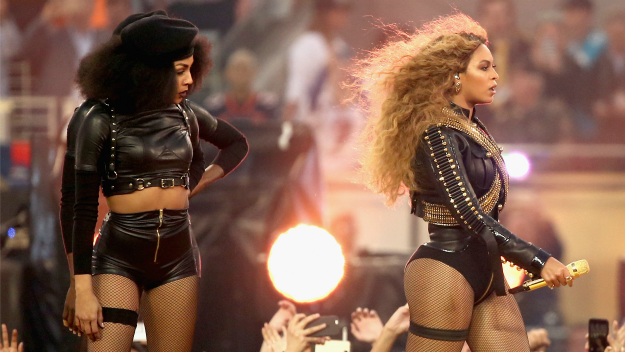|
Many of you have mentioned that you watched last night's Super Bowl and its halftime music performances. Some of you likely also have encountered today's deliberations in news media and online about Beyoncé's appearance during that halftime show. Pundits on the notoriously conservative Fox News channel (and other sources) called her appearance "outrageous" based on her presentation of political ideas — namely the Black Lives Matter movement — in both her song and her dancer's costumes. This is well-timed for our discussion of racial coding and othering in the Hall, Mulvey, and hooks readings. Go back through news stories and blogs that you've seen commenting on this incident, and consider the discourses in light of these three scholars' views on how black people are portrayed in culture and framed by communication media. Why is the political messaging of, say, the national anthem and/or tributes to veterans deemed suitable to this particular context, while the political messaging of an oppressed class is decried?
This New York Times columnist evaluated the day's histrionics in an astute piece that mentions a historical example of racial imaging of precisely the type Hall discussed in his piece. (Be sure to skim through the comments to that piece, as they starkly illuminate the kinds of discourses circulating around these issues.) A theater director in Berkeley wrote an interesting perspective on the larger cultural issues, too, considering the messaging of the new Beyoncé video, as well. "The Daily Show," of course, responded with commentary that highlights the othering experienced by black Americans: "And as a black person, you walk around every day constantly reminded that you are black." Watch here.
0 Comments
Leave a Reply. |
COMM 10
|

 RSS Feed
RSS Feed